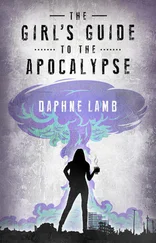[Polanski goes on to detail a series of career setbacks.]
That is where I was on March 11th of this year, when once again the circumstances of my life changed completely. The Columbia project was cancelled. My Italian investors in “Pirates” took the well-reported charges against me as a signal that they should bring a huge civil action against me for recovery of their advances, an action which is still pending.
Notwithstanding all these things, the producer Dino De Laurentiis offered me a new project, “The Hurricane,” in late May, which I accepted with gratitude and enthusiasm, and on which I am now working. He was only able to make me this offer at such a time because he is a genuine independent, answerable to no stockholders. In accordance with his trust in me, he has already committed lots of money to many, many people who will work with me on “The Hurricane.”
I hope circumstances don’t prevent me from justifying and repaying that trust.
If you have any further questions, I’ll certainly do my best to answer them.
Sincerely yours, Roman Polanski
Polanski’s assessment of himself was at least not mawkish or self-pitying. But the probation report of acting probation officer Kenneth F. Faye (and signed by a deputy, Irwin Gold) seemed to be recommending Polanski for the Nobel Peace Prize—or at the very least the Oscars’ Jean Hersholt Humanitarian Award.
First, the report detailed Polanski’s early suffering and the tragic death of his wife, noting that Polanski never saw a psychiatrist because he worried it “could interfere with the creative process.” He allowed that Polanski exercised “transient poor judgment and loss of normal inhibitions in circumstances of intimacy and collaboration in creative work, with some coincidental alcohol and drug intoxication” (the Quaaludes, he explained with not a trace of skepticism, had been prescribed to him for jet lag). He then went on to describe the “physical maturity and willingness and provocativeness of the victim, and the lack of coercion by the defendant and his solicitude concerning pregnancy.” (An interesting new euphemism for sodomy, apparently.) Despite my age and testimony that I had objected to having sex with Polanski and that I had asked to leave, the report concluded, “There was some indication that circumstances were provocative, that there was some permissiveness by the mother.” In other words, the “mother-daughter hooker team,” as Rittenband had labeled us. “Incarceration,” he wrote, “would impose an unusual degree of stress and hardship because of his highly sensitive personality.”
But that wasn’t enough. The probation report included assessments by psychiatrists drawn, it seems, from the Roman Polanski Fan Club. One seemed to fancy himself a film critic. “The defendant has not only survived, he has prevailed… and has become one of the leading creative forces of the last two decades…. Possibly not since Renaissance Italy has there been such a gathering of creative minds in the locale as there has been in Los Angeles County during the past half century… while they have brought with them the manners and mores of their native lands which in rare instances have been at variance with those of their adoptive lands.”
Don’t blame the man; blame the (foreign) culture.
The New York Times reported:
One psychiatrist who examined Mr. Polanski, Alvin E. Davis, found he was not mentally ill or disordered, and not “a sexual deviate.” “He is of superior intelligence, has good judgment and strong moral and ethical values,” the report said of Dr. Davis’s conclusions.
“He is not a pedophile,” Dr. Davis is quoted as saying. “The offense occurred as an isolated instance of transient poor judgment and loss of normal inhibitions in circumstances of intimacy and collaboration in creative work, and with some coincidental alcohol and drug intoxication.”
The probation report concluded: “It is believed that incalculable emotional damage could result from incarcerating the defendant whose own life has been a seemingly unending series of punishments.”
The letters of support from friends, too, tended to indirectly cast doubt on his thirteen-year-old victim and her motives. You could see the White Male 1970s Guys circling the wagons.
“There is, in fact, very little that is dark or sinister about Roman,” said Gene Gutowski, the producer of many of Polanski’s most acclaimed films. “He has remained amazingly normal and well adjusted… generous to a fault, uninterested in material gains of possession, he is a loyal and kind friend, thoughtful, and completely trusting, possibly excessively so. As a result, he has been used from time to time by young and ambitious females who felt that being seen with Roman in public or having their names linked with his in the gossip columns would lead to their advancement or gain them publicity.”
Producer Robert Evans, Paramount Pictures: “I know the suffering that has gone into his life, especially these last ten years, and I feel that [the press] has maligned him terribly. He may make for provocative headlines, but with rare exception, the press has never captured the beauty of Roman’s soul.”
And perhaps most tellingly, director and producer Howard Koch: “I’m sure the situation he finds himself in now is one of those things that could happen to any one of us.”
Incidentally, the hosannas didn’t come only from men in Hollywood. Fifteen years before she discovered that Woody Allen had nude photographs of her daughter, Mia Farrow also publicly supported Polanski.
As I said, my family and I didn’t care if Polanski was imprisoned. There was no value to be gained in that, and we weren’t vindictive. But to see the empathy that was extended his way, while virtually none was offered to us, was a very sobering thing. The report referred in passing to hate mail he received, but it also cited a letter of support for Polanski that read, “We should all help him get well for we are in his debt due to his artistry…. We should not cast him out of our society.”
As for Judge Rittenband, he quickly held a news conference in his chambers to explain the sentencing. In all of Larry’s experience, before or since, he had never heard of a judge so obsessed with his public profile that he actually conducted a question-and-answer session with the press. The case seemed to be moving to another phase, but Judge Rittenband was determined not to relinquish center stage so easily.
So with the sentence to undergo the “diagnostic study” for ninety days in Chino State Prison in place and seemingly press-approved, Judge Rittenband gave Polanski the ninety-day stay to finish preproduction work on a movie for Dino De Laurentiis’s, Hurricane. Polanski’s devil-may-care attitude displayed during this furlough proved to be his undoing.
The director was supposed to be heading to Bora-Bora for preproduction. Instead, he stopped in Germany to try to set up a distribution deal and check on some casting possibilities—including his former lover Nastassja Kinski. (The film eventually starred Mia Farrow, Jason Robards as the marauding white oppressor, and some guy who looked great without a shirt as the Culturally Pure Native. There’s a lot of bad weather. That’s all you need to know.) Polanski happened to be in Munich during Oktoberfest—and he was never one to shun a party.
The Santa Monica Evening Outlook ran a UPI photo of him surrounded by a bevy of young, attractive fräuleins , with the caption, “Film Director Roman Polanski, who was given a stay of a Santa Monica Superior Court order that he undergo a 90 day diagnostic study at a State prison, puffs at a cigar as he enjoys the companionship of some young ladies at the Munich, Germany Oktoberfest.”
Читать дальше












